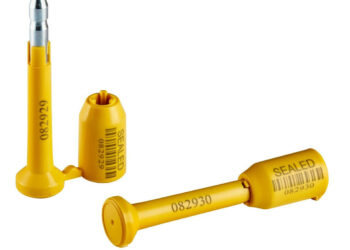In the world of industrial machinery and equipment, mechanical seals play a crucial role in ensuring the reliable operation of pumps, compressors, and other fluid-handling systems. These seals prevent leakage and contamination of fluids, making them essential components for various applications, including shipping and transportation. To ensure the seamless functioning of mechanical seals and, consequently, reliable shipping, rigorous testing procedures are imperative. This article delves into the importance of mechanical seal testing and outlines a comprehensive roadmap to achieve dependable shipping through effective testing measures.
Understanding Mechanical Seals:
Mechanical seals are devices designed to prevent fluid leakage in rotating equipment such as pumps and compressors. They consist of stationary and rotating components, often made from materials like ceramics, carbon, and metals. These seals create a barrier between the high-pressure process fluids inside the equipment and the surrounding environment, thus maintaining operational integrity and efficiency.
The Significance of Mechanical Seal Testing:
For shipping operations that rely on fluid-handling systems, the failure of a mechanical seal can lead to catastrophic consequences. Leakage can result in fluid loss, system downtime, environmental contamination, and even potential harm to personnel. To mitigate these risks, rigorous mechanical seal testing is essential. Testing not only ensures the integrity of the seals but also enhances the overall reliability of the shipping process.
The Roadmap to Reliable Shipping through Mechanical Seal Testing:
- Design and Material Considerations: The journey to reliable shipping begins with careful design and material selection for mechanical seals. Engineers must assess factors such as operating conditions, fluid properties, and equipment specifications. Proper material selection can enhance resistance to corrosion, wear, and heat, contributing to the longevity of seals.
- Prototyping and Initial Testing: Before mass production, prototypes of mechanical seals should undergo initial testing. This phase involves evaluating factors like seal compression, leak rates, and response to temperature fluctuations. Prototyping allows for design adjustments and fine-tuning before full-scale production.
- Quality Control in Manufacturing: Consistency in manufacturing is paramount. Implementing robust quality control processes during production ensures that each mechanical seal meets specified standards. Regular inspections, material testing, and dimensional accuracy checks should be conducted to identify deviations and rectify them promptly.
- Functional Testing: Functional testing simulates real-world conditions that the seals will encounter during shipping operations. This includes subjecting seals to varying pressures, temperatures, and rotational speeds to assess their performance under stress. These tests provide insights into the seals’ ability to withstand operational demands.
- Longevity and Endurance Testing: To predict the seals’ lifespan and performance over an extended period, endurance testing is crucial. Seals are subjected to continuous operation for extended durations, mimicking the demands of shipping cycles. This testing phase helps identify any gradual wear or degradation that may occur over time.
- Seal Failure Analysis: In the event of a seal failure, thorough analysis is essential to determine the root cause. This involves examining failed seals to identify factors such as material fatigue, improper installation, or design flaws. Lessons learned from failure analysis contribute to continuous improvement in design and testing processes.
- Environmental and Regulatory Compliance: Shipping operations are subject to various environmental and regulatory standards. Mechanical seal testing should align with these requirements to ensure safe and compliant operations. This may involve testing for emissions, leak rates, and environmental impact.
- Training and Maintenance Guidelines: Beyond testing, providing training and guidelines for proper seal installation, operation, and maintenance is vital. Well-trained personnel can contribute significantly to the longevity and reliability of mechanical seals, ultimately enhancing the overall shipping process.
Conclusion:
mechanical seal testing stands as a cornerstone in the roadmap to reliable shipping. By adhering to a comprehensive testing strategy that encompasses design considerations, prototyping, quality control, functional and endurance testing, failure analysis, and compliance, shipping operations can ensure the dependable performance of mechanical seals. Ultimately, this commitment to testing translates to minimized risks, reduced downtime, and enhanced safety, contributing to a smoother and more reliable shipping process.











